Saint Catherine of Alexandria

Saint Catherine is the original patron saint of philosophers and students, anorexics and bulimics, who still struggle with that wheel. She developed a popular following during the Crusades, prior to her encounter with Joan of Arc and she merits a revival today. However, many paintings and altarpieces of Saint Catherine are particularly brutal, like this French illuminated manuscript from the Book of Hours of Simon de Varie in 1455. Catharine was said to have converted 50 scholars to Christianity and, for this, she was sentenced to be executed by being broken on a wheel. But here she is beheaded first apparently.
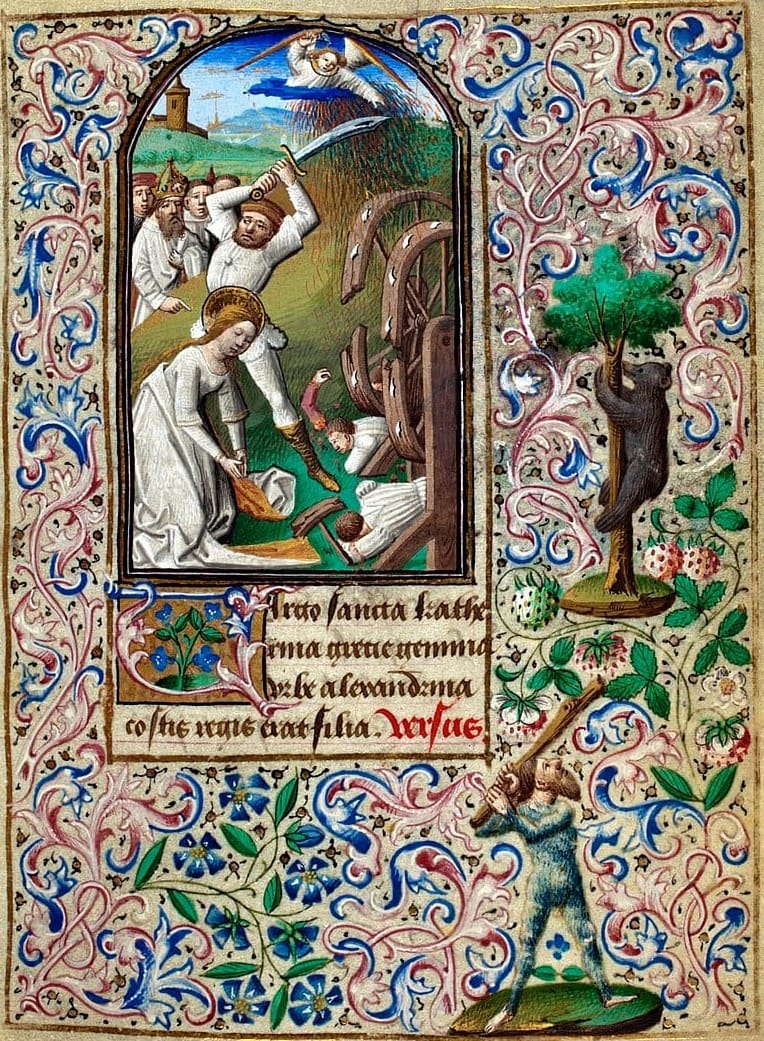
Then there's The Martyrdom of Saint Catherine of Alexandria (below); notice the execution knife? It was painted by Lucas Cranach the Elder around 1506, from the beginning of his career. He later would come under the spell of Martin Luther, whom he painted in 1529. Luther gave Cranach this sage advice: to paint his women "ten-folds more rapacious and ravenous," with "the wife-coveting man and his lover totally unclothed, committing those unspeakable acts." Was he serious?
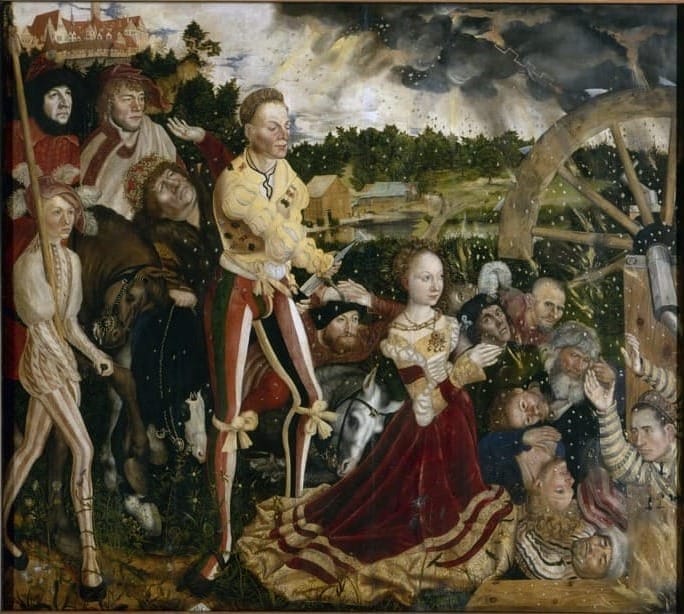
Below are some more pensive, optimistic paintings - a masterpiece by Caravaggio (circa 1598), and then a detail from a very small Jan van Eyck Dresden Triptych altarpiece (1437); the full painting is shown up top. At bottom is Raphael (circa 1507). The broken wheel is visible in all three paintings. But, as the Tarot shows, the wheel is also a metaphor for Fate and Fortune and really we never escape it if we pursue worldly desires.
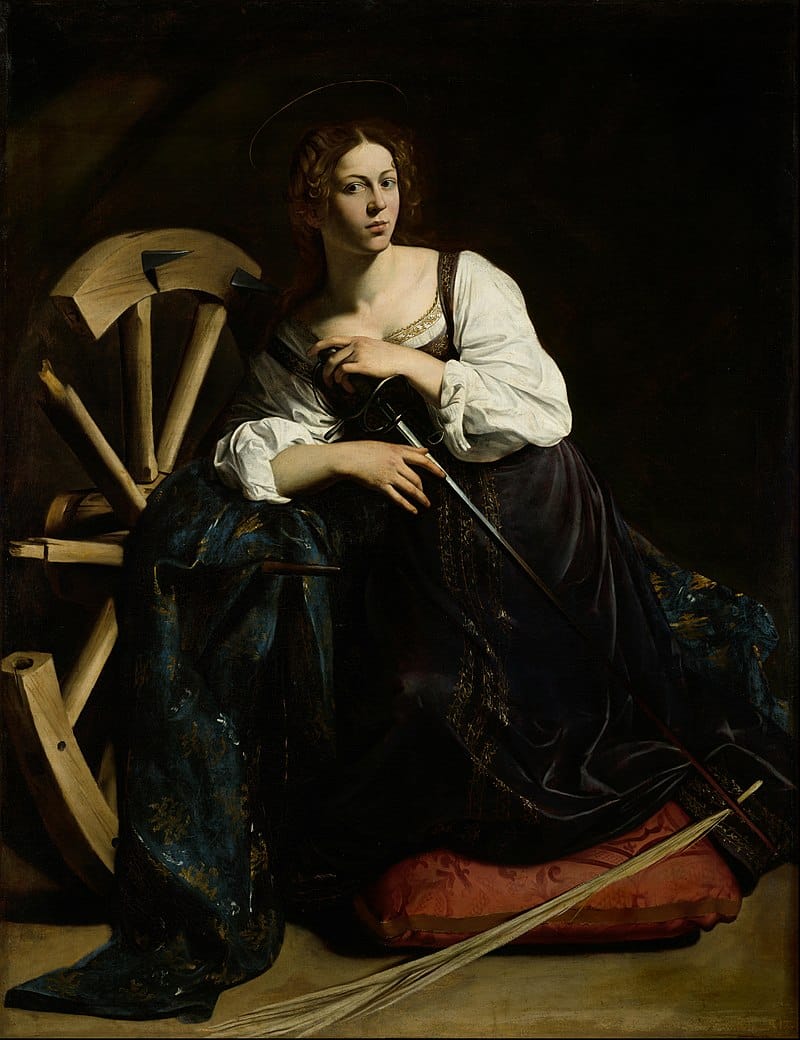
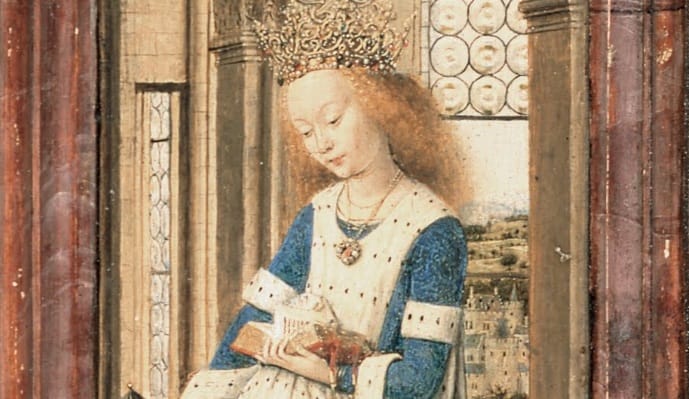
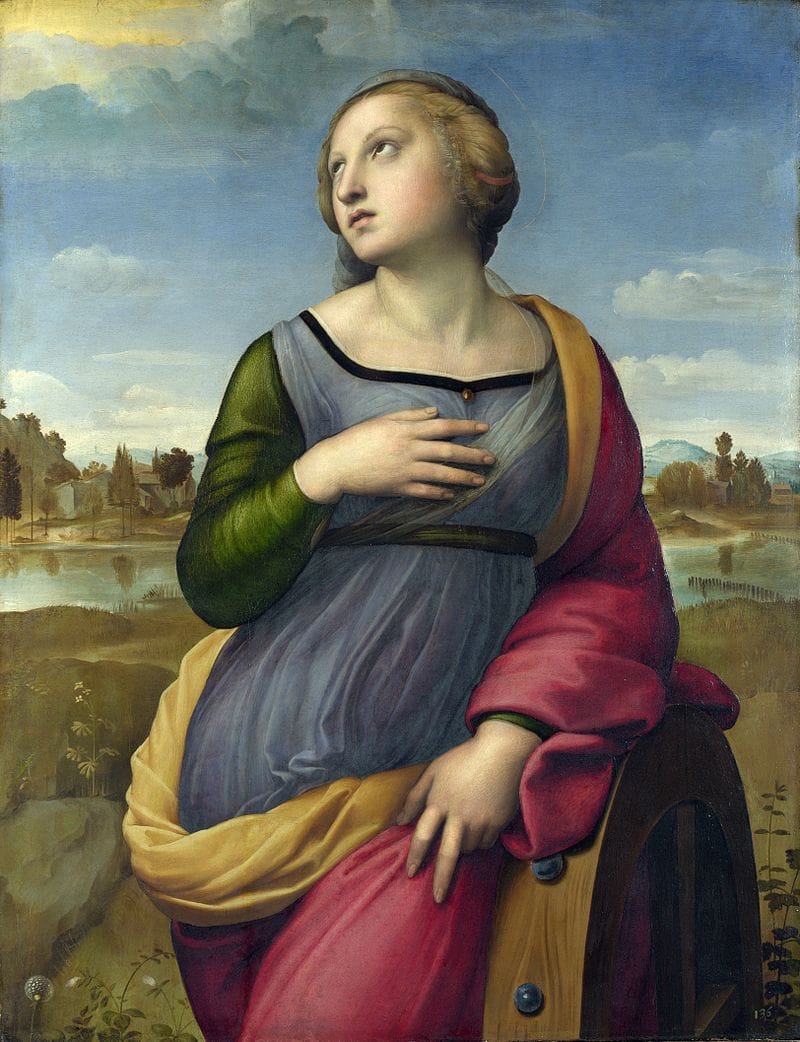
It has been speculated that the 12th century Saint Bernard of Clairvaux suffered from anorexia nervosa. He lived such an austere lifestyle - notably the "heroic fasting" - it does appear he was sick much of the time, which may have been the same thing.
In the mean time, you can still visit Saint Catherine's monastery at the base of Mt. Sinai, built by the Emperor Justinian in the year 530.
